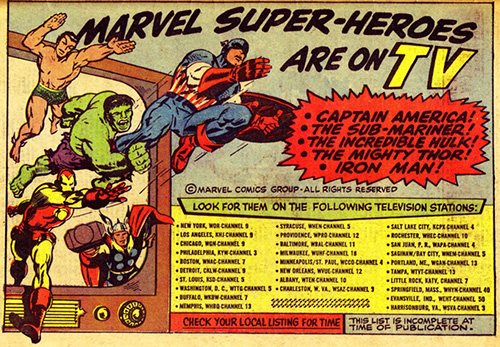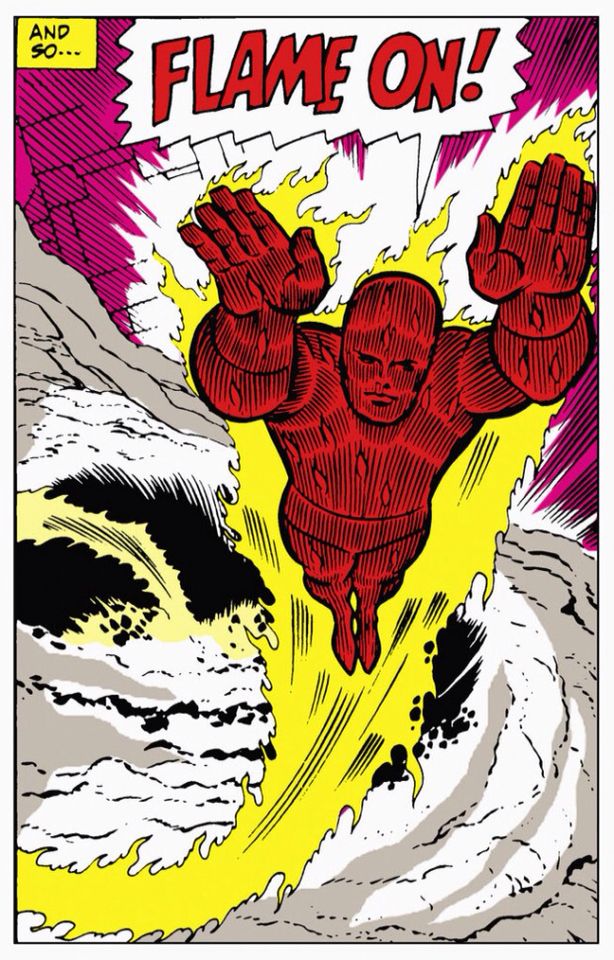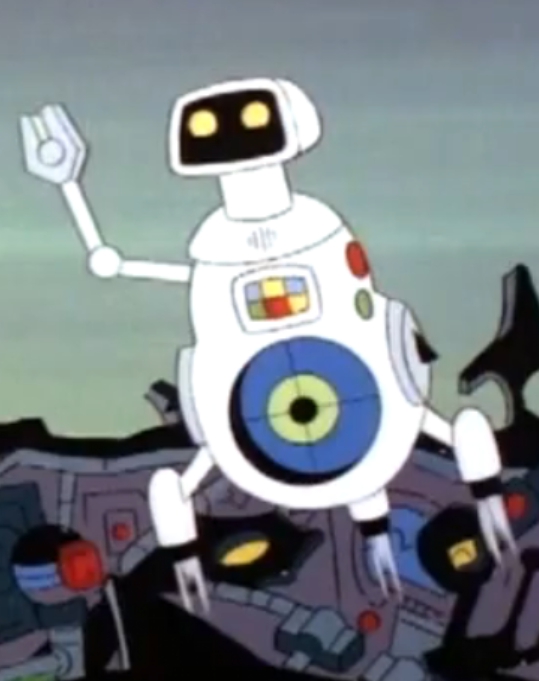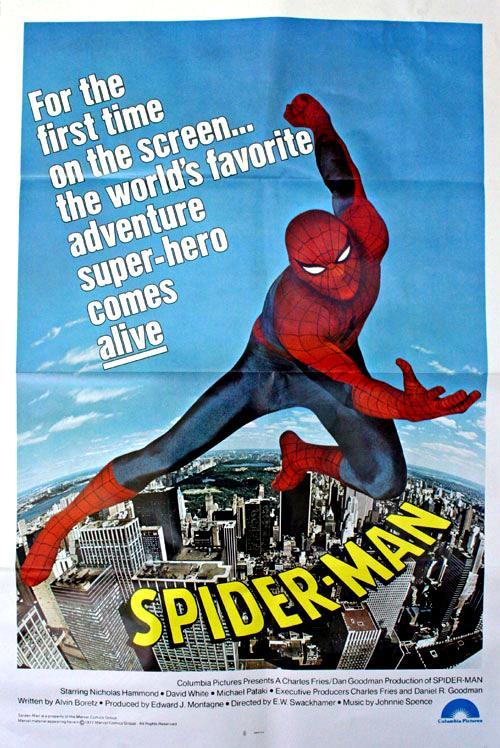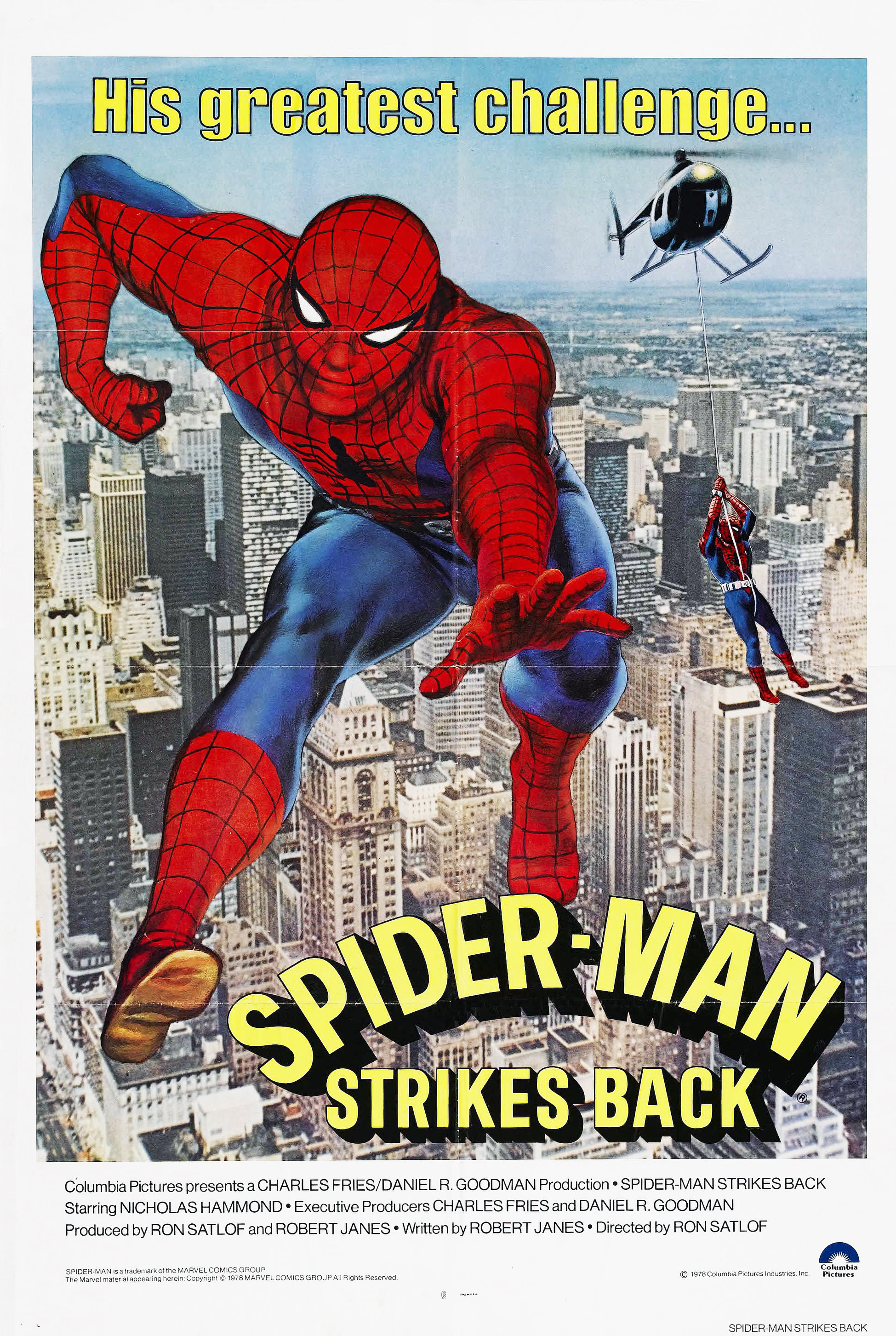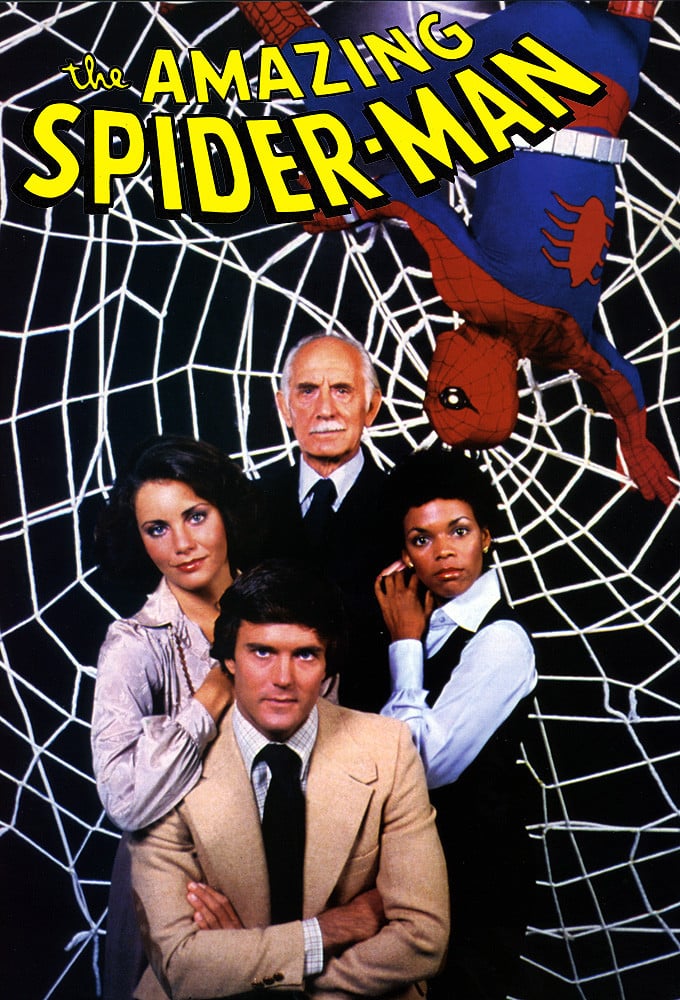
@TheBelser
What’s happening people? it’s your boy The Belser back to drone on and on about the weirdo stuff that he loves. But you know what? I don’t care! I live doing these articles and I really love the response I’m getting. What can I say? I like to do the research and I love detail-oriented writing. I’m sure these tomes of mine will be a vital reference to young geeks out there who always wondered about this stuff.
Case in point, my article today speaks on a Marvel world that existed before the beloved MCU. Hell, this is a world even before CGI was a thing in movies. This goes back to the caveman days of network television. Do you kids know there was only 3 major networks on TV before cable? That’s right: ABC, NBC and CBS. The last one took a huge step in TV fandom by introducing a group of live action superhero shows based on the characters of Marvel Comics. This is the tale of how they came to be. As always, I hope you enjoy this as much as I enjoyed writing it. So, let’s get started, shall we?
How I Found the Characters:
My first recollection of these characters first came in the form of some TV promos for the TV movie The Death of The Incredible Hulk. I don’t recall actually watching the movie itself but I do recall the image of the Incredible Hulk leaping spread eagle from exploding plane. After a few years, my uncle Charles was watching the Sci-Fi Channel at our old apartment and he was watching an old episode of The Incredible Hulk. The scene had The Hulk breaking down doors, tossing guys around and then leaping out of a window into the night. After that, I became 100% hooked on the character as I was just at the infancy of my superhero geekdom. The series ran quite regularly on Sci-Fi along with another one I discovered: The Amazing Spider-Man.
During the holidays, both the USA Network and the Sci-Fi Channel would run very similar marathons of these shows usually entitled The Mighty Marvel Marathon. A few years into it, they began to introduce the other characters like Captain America and Doctor Strange. The Incredible Hulk has gone on to become my favorite television show. As I got older and would start going to Comic Cons, I would see these TV movies on bootleg VHS or DVD. I try to watch them every year just for sheer nostalgia.
CBS and Marvel:
In 1977, Marvel publisher Stan Lee worked out a deal with Frank Price, the then-head of Universal Television. The deal: for CBS to develop live action TV programming based on any of several characters they had licensed from the Marvel Comics library. Of the many heroes in the Marvel Universe, only five were ultimately selected: The Amazing Spider-Man, The Incredible Hulk, Captain America, Doctor Strange, and The Human Torch.
• Of those five, four were made into TV movies.
• Of those four, only three had more than one TV movie.
• Of those three, only two made it to an actual series.
• Of those two, only one survived and lasted multiple years (The Incredible Hulk)
After the deal is struck, Price and the CBS staff went about offering these properties to the many producers they had at their disposal. However, times were different and comic book properties was not attractive to film makers who considered themselves to be ‘serious artists’.
The One That Never Made it:
Of these five Marvel heroes, only one that never made it past the drawing board: The Human Torch. The youngest member of the Fantastic Four had already received his own solo adventures in Strange Tales for Marvel Comics in the 60’s and was one of the more popular characters. Unfortunately, special effects technology on television at the time was not able to bring a character like this to fruition. TV back then barely had the technology to make a person fly onscreen, much less make a person fly while on fire. Also, I’m seeing several articles that parent groups and executives at CBS were concerned that children would try to imitate the abilities of the Human Torch. The most notable example of this would be children either lighting objects or themselves on fire.
NOTE: This deal prevented the use of the Torch in any other series at the time. However, two animated series were in development at the time with the Torch as a main character.
This deal led to the creation of two substitute characters that would make their way to the comics: HERBIE the Robot on The New Fantastic Four and Firestar on Spider-Man and His Amazing Friends.

The Amazing Spider-Man:
The first of this new crop of characters that CBS would adapt to TV was Marvel’s flagship hero and official company mascot, Spider-Man. Spider-Man debuted in Amazing Fantasy #15 (August 1962) and was created by writer Stan Lee and artist Steve Ditko. The idea of Spider-Man came from a surge in teenage demand in comics. So, Stan wanted to create a character that teens could relate to. The problem was that most of the teens in comics were sidekicks and Stan hated sidekicks:
“I hated teenagers in comics because they were always sidekicks. And I always felt if I were a superhero, there’s no way I’d pal around with some teenager, you know. At the very least people would talk. But I thought it might be interesting to make the teenager the actual hero. What would happen if a teenage kid got a power? And then I thought it’d be even more interesting to make him a kid with the normal problems that so many teenagers have” (Stan Lee, 2006, “Stan Lee on Realism in the World of Comic Heroes” NPR.com).
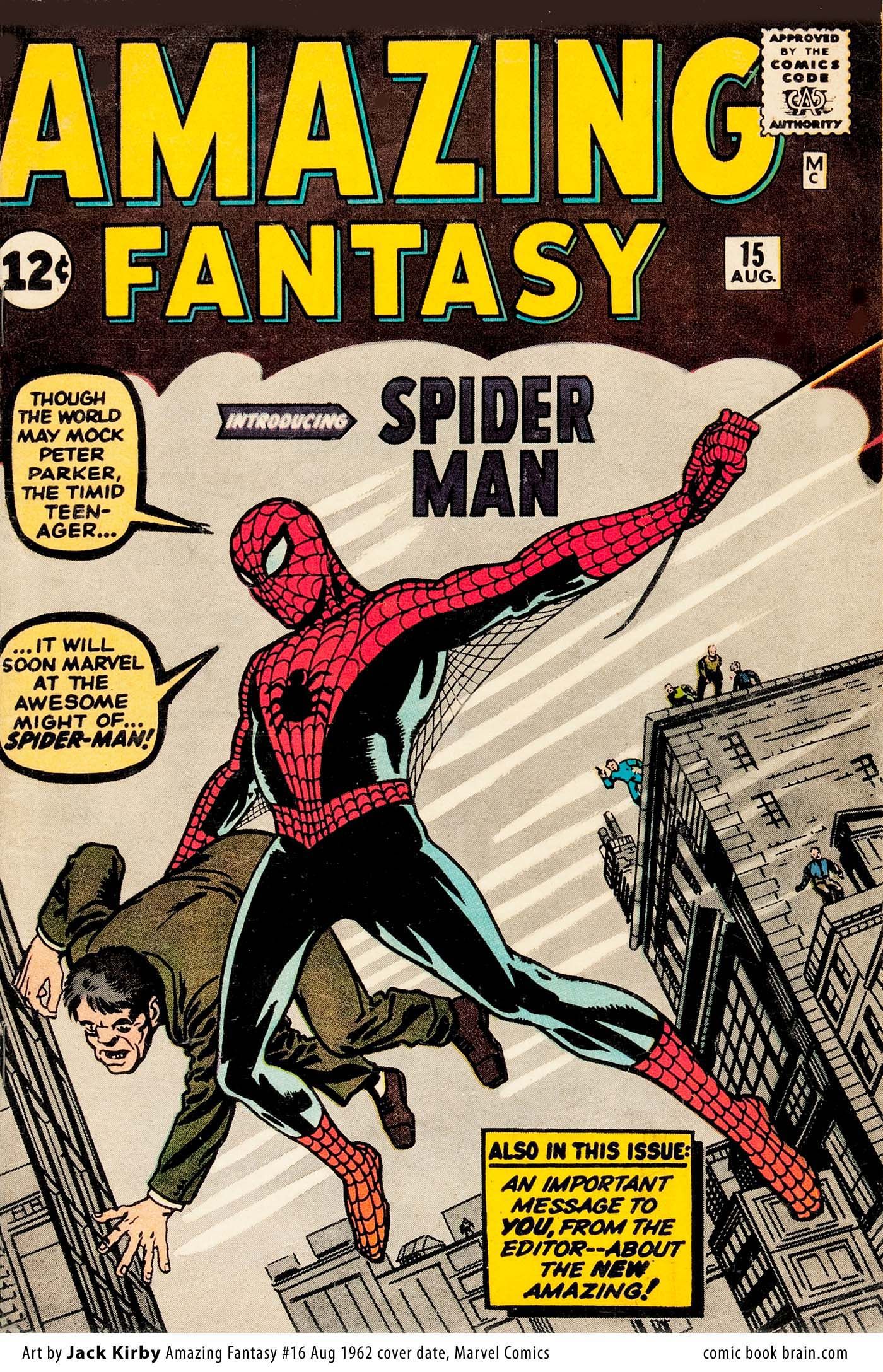
Further inspiration came to Stan while watching a spider climb up a wall. He thought the ability to stick to walls would be an interesting power. He chose the name “Spider-Man” because it sounded mysterious and it would age with the character unlike “Spider-Boy” would. Coupled with Steve Ditko’s art style, Lee gave Spider-Man many of the same problems facing most of young readers.
“He’s not the most popular guy in school. He was busy looking after his aunt who was old, like 150 years old. He was always having to get medicine for her and worry about her. She didn’t have enough money for the rent. And I wanted him to be the kind of guy who’d have allergy attacks, and ingrown toe nails, and occasionally when he’d have a fight with a villain his costume would get torn and he did know how to sew. You couldn’t go to a tailor and say would you fix my Spiderman costume. So I wanted all those little things to happen” (Stan Lee, 2006, “Stan Lee on Realism in the World of Comic Heroes” NPR.com).
These personal issues, his sense of humor and his adventures made Spider-Man into one of the most successful and popular superheroes of all time.

Prior to the show, Spider-Man’s only live action portrayal was in a recurring skit called ‘Spidey Super Stories’ on the 70’s children’s program The Electric Company. In the skits, Spidey did not talk. He only communicated with word balloons to help young kids to practice reading.
NOTE: The Amazing Spider-Man was the first-ever live action TV program based on a Marvel Comics character.
The CBS show was produced by Charles Fries and Daniel Goodman. The producers, however, were not fans of Spidey or comics in general. This is clear by the fact that they made a lot of changes to make it more palpable to the mainstream audience that were not familiar with the web-slinger. The changes were as follows:
• No super villains: Spider-Man is known for his amazing rogues’ gallery of super-villains. Great villains like the Green Goblin, Doctor Octopus, and The Scorpion would not make the jump to TV purely because of budget reasons. In their places would be run-of-the-mill gangsters, terrorists, and crooks.
• No supporting cast: Peter would have love interests throughout the show but there was no Mary Jane Watson or Gwen Stacy. Also, Peter had no recurring friends on the show and that means no Flash Thompson or Harry Osborn. The most important omission is Uncle Ben, seeing as his death is the primary motivation for Peter’s decision to become Spider-Man. Aunt May did appear on the show twice (in the pilot movie and in one episode of the series) and was played by a different actress each time. Robbie Robertson also makes a brief appearance in the pilot movie. The only supporting character from the comics that was a regular character on the show was J. Jonah Jameson.
• No other heroes: Marvel Comics is known for crossovers with the other heroes for team-ups and/or confrontations. Spider-Man is the only superhero in the reality of the show.
• No ‘quips’: One of Spidey’s trademarks is his sense of humor. Spider-Man is known for making witty remarks during battles to rattle his opponents. This version of Peter Parker came across as too straight-laced. He was a goody two-shoes who could be quite judgmental of others. You can see throughout the show that he rubs a lot of people the wrong way unlike the charming, jovial Spidey from the comics.
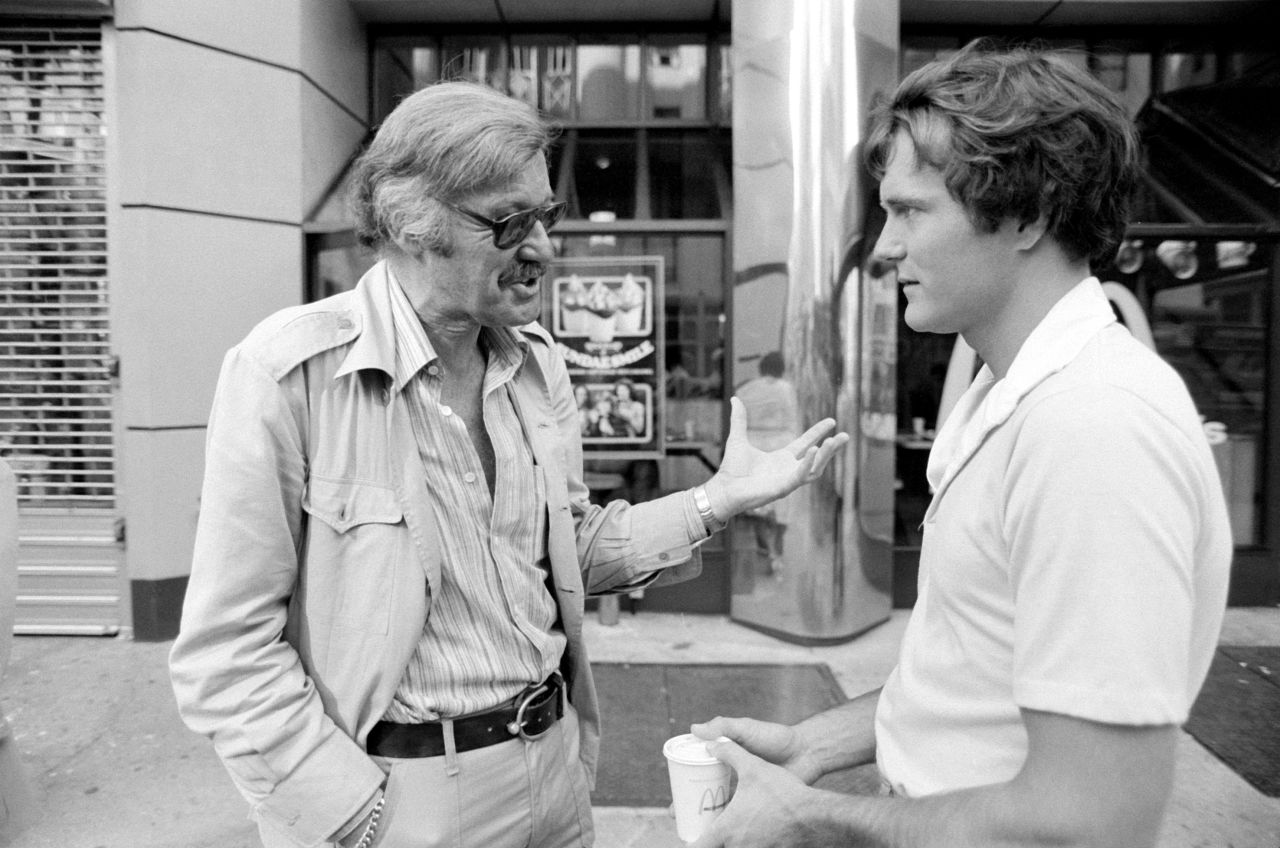
These significant changes made The Amazing Spider-Man one of the few Marvel projects that co-creator Stan Lee did not like. Though Stan is listed as a script consultant in the show’s credits, the producers still did things their way and it just did not work. Stan explained his feelings in an interview with The Hollywood Reporter:
“The Spider-Man TV series I was very unhappy with because very often, people will take a novel, let’s say, and bring it to the screen … and they will leave out the one element, the one quality that made the novel a best-seller. With Spider-Man, I felt the people who did the live-action series left out the very elements that made the comic book popular. They left out the humor. They left out the human interest and personality and playing up characterizations and personal problems.”( Parker, 2017, ‘Stan Lee Hated 1970s ‘Amazing Spider-Man’ TV Series’, The Hollywood Reporter).
Casting ‘Spider-Man’:
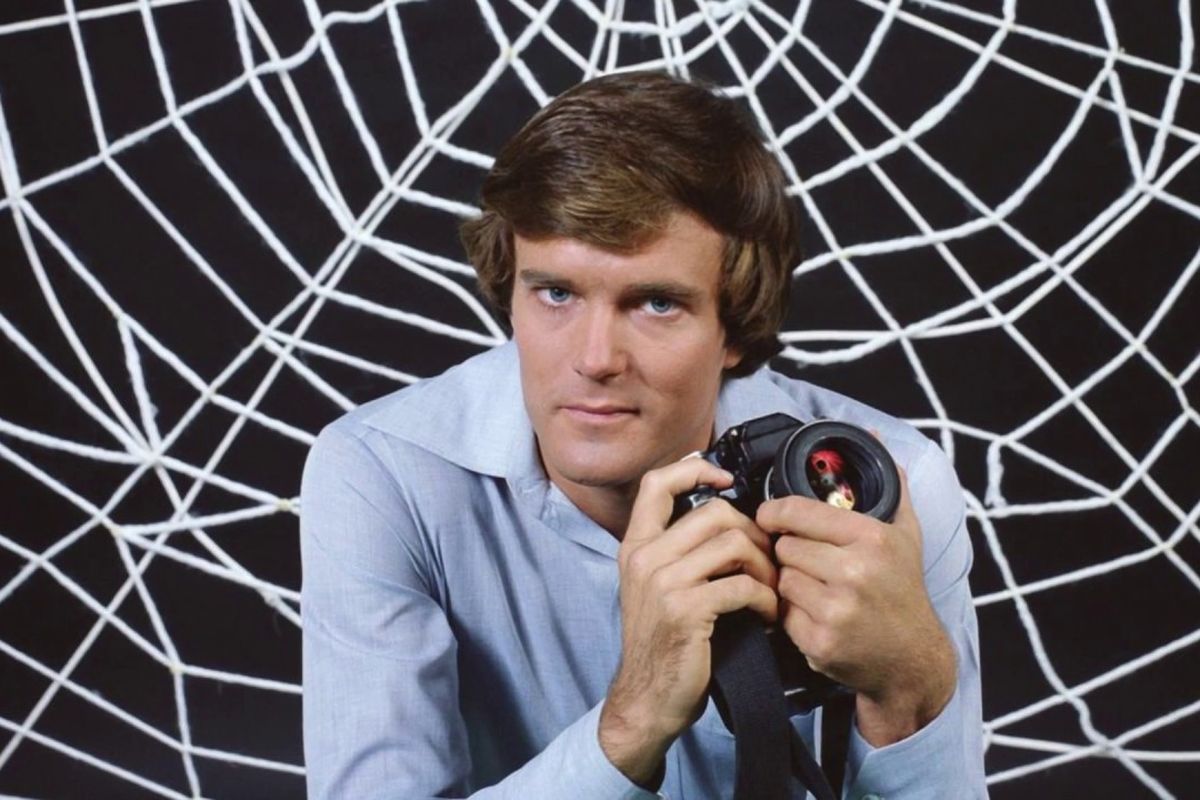
For the CBS show, the producers cast 27-year old actor Nicholas Hammond (which makes him the oldest of the Spider-Man actors). NOTE: Hammond’s most famous role prior to the series was as one of the Von Trapp children in the classic musical The Sound of Music. Hammond spoke on the casting experience in an interview for The Oakland Press:
“They weren’t interested in doing a campy version. They (wanted) a version where you believed Peter was a completely real person. He just happened to have this gift — or this curse — thrust upon him. How would a person react if that happened to them? That really intrigued me … I thought, ‘That’s a unique challenge as an actor I’ll probably never get another chance to do.’”( Krug, 2017, ‘Nicholas Hammond to make his debut at Great Lakes Comic-Con Feb. 24-25’, The Oakland Press.).
The show was mostly shot in Los Angeles (with a few exteriors in New York). Hammond did wear the costume for close-ups but all the stunt work was performed by stuntman Fred Waugh. The effects of wall-crawling and web slinging were sparsely featured because they were so expensive. Wall crawling was achieved by a stunt man either being dragged up a building by a (sometimes visible) wire or bear crawling on a piece of set laid on the ground. The best shot of the entire series is in the opening credits: the sight of Spider-Man climbing up the Empire State Building.
Origin:
Peter Parker is a graduate student working on his Ph.D in physics at New York State University. He also struggles to make ends as a freelance photographer for The Daily Bugle newspaper and their hostile boss J. Jonah Jameson. Jameson thinks Parker’s photographs are ‘too pretty’ and ‘artsy’ for a major newspaper. Soon after, Peter is conducting a lab session with a fellow student at college which included the containment of radioactive material. During the session, Peter notices something flashing as they finished. The ‘flashing’ object was a spider that was exposed to said radioactive material. Peter is then bitten by the radioactive spider. As he leaves, Peter manages to evade a speeding car by climbing up a wall and on to a balcony. Peter discovers he has gained superhuman powers, such as super-strength, agility and the ability to climb sheer walls and ceilings. Peter went home to his Aunt May’s house and has strange dreams about spiders as his DNA further changes. He wakes and tests his powers by climbing the outside of Aunt May’s house (in a very bad blue screen scene). Spider-Man first reveals his presence by halting a thief who stole a woman’s purse. The thief was so amazed by the sight of a man climbing the side of a building that he froze, allowing the police to arrest him. Both the thief and a crowd of people try to explain the sight of this wall crawling hero to a policeman who is in disbelief. Back at the Daily Bugle, Jameson hears reports of this new “hero”, who has been dubbed ‘Spider-Man’ by the public. Assistant editor Robbie Robertson tells Jameson of the public demand for information about Spider-Man. Peter takes the opportunity to say that not only has he seen the new hero but he has a photo of him. Peter Parker then makes a skin tight red and blue suit with a mask and a spider symbol on the chest. After thwarting an extortionist’s scheme, Peter begins fighting crime in New York as the superhero Spider-Man.
Powers:
Superhuman Strength: Spider-Man has incredible superhuman strength. Peter explains his strength as being proportional to the natural strength of a spider (“It’s all in proportion to his size. He’s thousands of times stronger than you”). Many episodes show Peter breaking door knobs, forcing open safe doors, bending steel bars and breaking a steering wheel column. This strength also extends to his legs, allowing for super leaps. A professor in the second TV movie states that Spider-Man would be able to jump 20 to 30 feet in the air. The same movie shows Spider-Man leaping from a driveway to the top of a multi-story mansion in a single bound.
Superhuman Agility/Martial Arts: Spider-Man has great dexterity and balance. One episode shows Spider-Man being able to walk a tight rope. Spider-Man is adept at dodging striking attacks quickly. Apparently, the spider bite also infused Spider-Man with innate martial arts skills. Many episodes have Spidey fighting and holding his own against ninjas and Chinese martial artists.
NOTE: Many of the fights on this show uses the same sound effects as many of the Bruce Lee Kung-Fu movies at the time like Enter The Dragon.
Superhuman Durability/Healing Factor: Spider-Man’s body is highly resistant towards impact force. Spider-man is seen taking many punches and kicks from criminals without any serious injuries. However, he is not invincible. Early episodes have Spider-Man dislocate his shoulder after a high fall and being susceptible to allergies. However, Spider-Man’s metabolism allows him to heal faster than normal humans can.
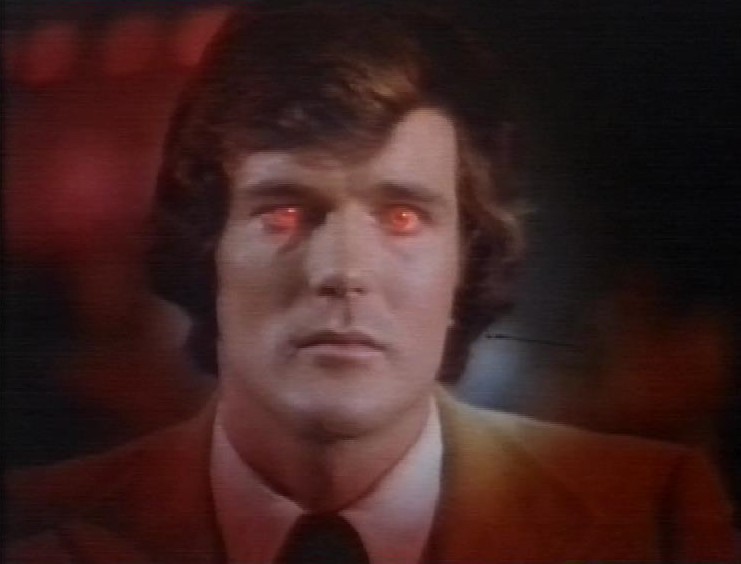
Spider-Sense: After the bite, Spider-Man immediately develops a sixth sense that heightens his natural senses to allow him to evade danger. The spider-sense is represented by a simple sound effect in the pilot. In the series, the camera would freeze-frame on Peter’s face, then his eyes would glow in a pulsating, strobe light effect. During this, Peter (and the viewer) would see a muted vision of the incident that causes the danger.
Wall-Crawling: Spider-Man naturally produces an adhesive that allows him to adhere to walls, ceilings, and other surfaces in order to crawl all over them. Spider-Man is very often seen climbing large buildings and clinging to ceilings.
Gifted Intelligence: Peter Parker is a highly intelligent student with a high aptitude in various sciences. Peter uses his many connections in college and different organizations to help his cases. He even has access to information from NASA.
- Fringe Science: Peter is highly knowledgeable of hypothetical sciences like hypnosis, psychic phenomena, paranormal photography, telekinesis and cloning. In the second TV movie, a physics professor tells the police that Peter is brilliant enough to be able to create a nuclear device.
- Chemistry/Engineering: Peter was able to make a chemical compound that is similar to the webs of a spider. The compound is strong to support the weight of several full-grown men. To use the compound, Peter Parker creates a pair of wrist mounted web-shooters in a laboratory. Spider-Man uses his web-shooters for various purposes like immobilizing enemies in web nets and swinging on a web line. Peter also creates a Spider-tracer device by planting a plastic spider on an object (usually a vehicle) and can track it across a major city.
Skilled Photographer: Peter Parker is a very skilled photographer, taking pictures for the tabloid newspaper company, The Daily Bugle. Peter’s big break is due to the fact that he is the only photographer in New York that could get a picture of Spider-Man. He soon goes from a freelance photographer to a salaried photojournalist due to the many cases he breaks as Spider-Man.
TV Movies:
The Amazing Spider-Man
Debut: September 14, 1977 on CBS:
A mysterious extortionist surfaces in New York City and places prominent people under mind-control to rob banks and commit other crimes. He then threatens to have 10 New Yorkers under his command commit suicide unless the city pays him a $50 million ransom. Meanwhile, College student Peter Parker, a freelance photographer for The Daily Bugle struggles to make ends meet under his sometimes hostile boss J. Jonah Jameson. Peter is bitten by a radioactive spider after a lab session at college and discovers he has gained superhuman powers. After a near death incident, Peter invents a super-sticky web serum, dons a masked costume, and sets out to stop this plot as Spider-Man.
Film Notes:
• J. Jonan Jameson was played by actor David White. White is most famous as boss Larry Tate on the classic ABC sitcom BEWITCHED.
• Actor Michael Pataki plays police Captain Barbera (an original character that carried over to the series). Pataki is best known as the Klingon villain from the episode ‘The Trouble with Tribbles’ of the original STAR TREK series and as Ivan Drago’s Russian representative in ROCKY 4 (“Whatever Drago hits, he destroys.’)
• The movie’s villain is another ROCKY veteran. Actor Thayer David appeared in the first ROCKY movie as Miles Jergens, the man who offers Rocky Balboa his first title shot and promotes the first fight between Rocky and Apollo Creed.
• The love interest, Judy, is played by actress Lisa Eilbacher. Lisa would later appear in 80’s hits like AN OFFICER AND A GENTLEMAN (with Richard Gere and Louis Gossett Jr.) and 1984’s highest grossing film, BEVERLY HILLS COP (with Eddie Murphy).
Spider-Man Strikes Back: ( AKA The Deadly Dust)
Debut: May 8, 1978 on CBS:
After months of heroics, Spider-Man makes national news after a well-publicized rescue of a suicide jumper. This gets the attention of an attractive journalist named Gale Hoffman, who works for a Miami based tabloid called The Weekly Examiner. Her goal: To get the first-ever one-on-one interview with Spider-Man. J. Jonah Jameson and Gale agree to run the interview simultaneously. All they need is the cooperation of one person: Peter Parker. Peter is the only person that can get pictures of Spider-Man and Gale is assigned to tag along until Peter meets him again. Meanwhile, Peter and a trio of Peter’s fellow students make a protest to their professor for agreeing to handle a container of radioactive plutonium oxide (also nicknamed ‘The Deadly Dust’) on campus. While Peter backs off, the remaining trio later steal the plutonium oxide to try to build a bomb in order to illustrate the dangers of nuclear power. Because of Peter’s intelligence, the police suspect him of the crime as does international villain Mr. White. White and his henchmen steal the plutonium so that he can obtain his own version of the weapon. White flees to Los Angeles and demands $1 billion dollars in return for not setting off the plutonium bomb in a heavily populated area. Peter Parker and Gale Hoffman arrange to travel to the West Coast in search of White. It leads to a big adventure in which Spider-Man saves Los Angeles (and the visiting President) from a nuclear explosion.
Film Notes:

• Gale Hoffman was played by actress JoAnna Cameron. Cameron was the best love interest in this entire series (even though she is way out of Peter’s league) and gave a great Lois Lane vibe. The movie also allowed Cameron to display her fantastic, athletically toned bikini body (a rarity in the 70’s). Cameron herself was already a CBS superhero in her own right: she played Isis in the Saturday morning show The Secrets of Isis.
• The movie introduces Jameson’s new secretary Rita Conway (played by actress Chip Fields). Conway’s appearance and personality is based on Jameson’s secretary in the comics at the time, Glory Grant.
• The movie’s villain, Mr. White, is played by veteran actor Robert Alda. Alda also played a villain on two episodes of The Incredible Hulk (“Terror In Times Square” and “ My Favorite Magician”)
One of the high points of the movie is a conversation between Peter and Gale about Spider-Man that is the most like the comics than anything the series ever produced:
Peter: I think Spider-Man does a lot of good but if people knew who he was, well…It just wouldn’t be the same.
Gale: No one asked him to save the world.
Peter: I don’t think he wanted any part of being a superhero.
Gale: Then all he has to do is turn in his little blue tights.
Peter: And what about his conscience? What is the point of having some kind of a special power if you don’t use it to help people?
Gale: Ok. It could be a tough life.
Peter: And lonely. How can he ever talk to people? Like we are now? I mean what kind of life can he really have? I mean think about it. He has to lie. To everyone. At work. His friends. What about girlfriends? How can he ever hope to get married? Just have a normal life. People think it would be really wonderful to have Spider-Man’s powers. Let me tell you I’m not sure if it’s a blessing or a curse.
The show debuted to great ratings but not good enough to justify its expensive budget. The show only lasted 13 episodes spread over 2 short seasons from 1977 to 1978.
NEXT TIME: THE INCREDIBLE HULK!!!!!

